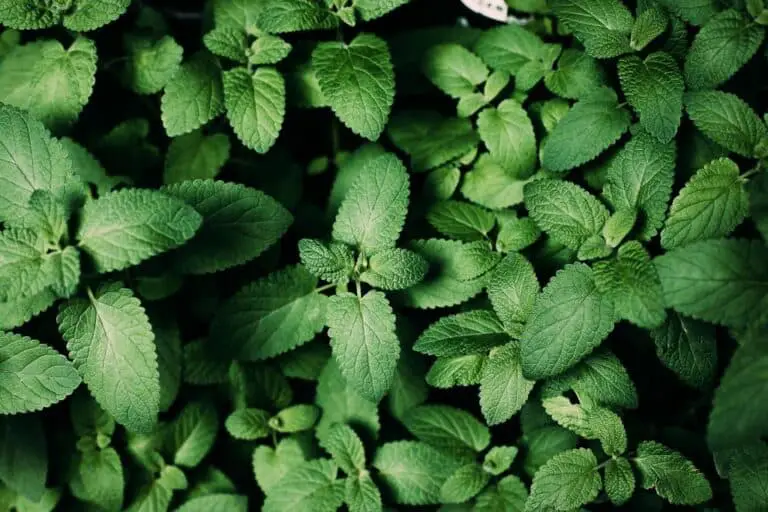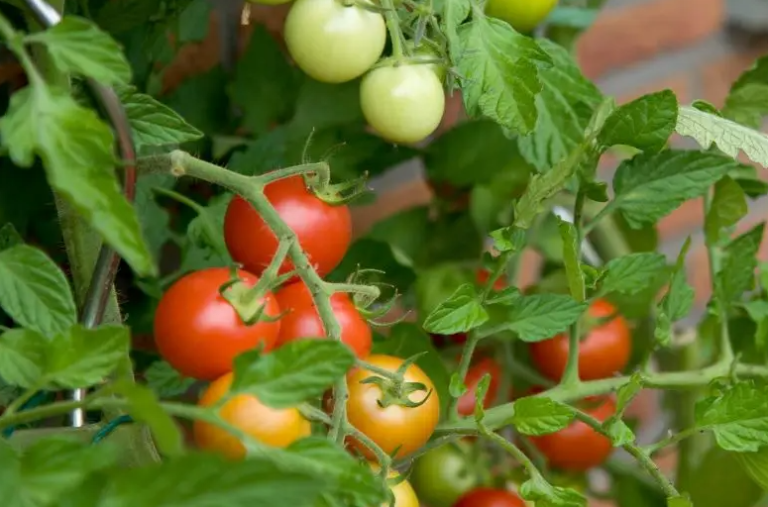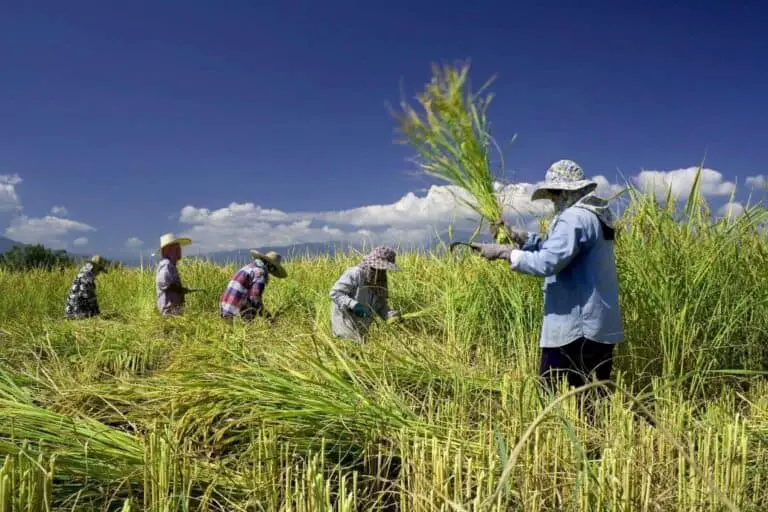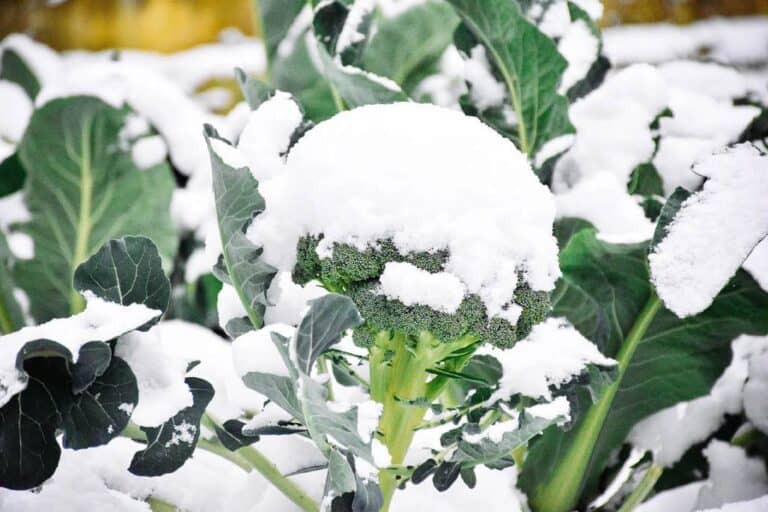Can Brussel Sprouts Survive Frost and Withstand Freezing Temperatures?
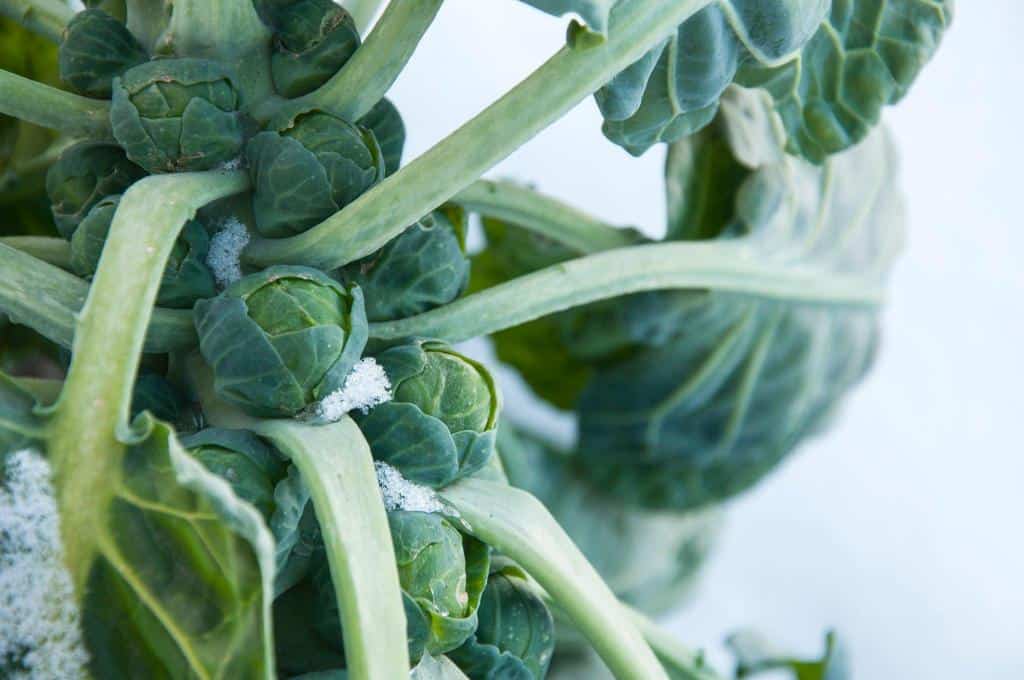
Are you a fan of the crisp, earthy flavor of Brussels sprouts? These miniature cabbages have earned a well-deserved place on the plates of many vegetable enthusiasts. But have you ever wondered just how resilient these little wonders truly are? Can Brussels sprouts withstand the icy grip of frost and freezing temperatures?
If you’re planning on growing these delectable vegetables in your garden or are simply curious about their cold-weather survival skills, you’ve come to the right place.
In this article, we’ll delve into the remarkable world of Brussels sprouts and their ability to brave the harshest of winter conditions. Get ready to explore their hardiness, discover effective strategies for protecting them from frost, and gain insights into growing these robust veggies in colder climates.
So, let’s bundle up and embark on a chilly adventure to uncover the secrets of whether Brussels sprouts can survive frost and withstand freezing temperatures.
Understanding Frost and Freezing Temperatures
Before delving into Brussels sprouts’ frost resistance, it’s important to understand the concepts of frost and freezing temperatures. Frost occurs when the temperature drops below freezing (32°F or 0°C), causing moisture in the air to freeze and form ice crystals. Freezing temperatures refer to the range below 32°F (0°C) when water in plant tissues can also freeze.
When exposed to cold temperatures, plant tissues can suffer damage. Ice crystals forming within the cells can rupture the cell walls, leading to irreversible harm. However, the severity of the damage depends on various factors.
Anatomy of Brussels Sprouts
To comprehend how much cold Brussels sprouts can tolerate, let’s take a closer look at their anatomy. Brussels sprouts belong to the Brassica oleracea species, which includes other members such as cabbage and broccoli. They are biennial plants that produce compact, leafy heads with small sprouts along the stem.
During the plant’s growth cycle of Brussels sprouts develop a sturdy main stem, large leaves, and axillary buds that eventually form sprouts. The sprouts, resembling miniature cabbages, grow progressively larger as the plant matures. This growth pattern is essential to their ability to withstand cold temperatures.
Adaptation and Hardiness of Brussels Sprouts
Brussels sprouts have a natural adaptation to cool climates, making them more tolerant of frost compared to many other vegetables. They are classified as cool-season crops, thriving in temperatures between 45°F and 75°F (7°C and 24°C). This adaptability allows them to withstand light frosts, typically down to around 28°F (-2°C), without significant damage.
Hardiness zones, a classification system for plant cold tolerance, help determine suitable regions for growing Brussels sprouts. Generally, Brussels sprouts can be grown in zones 3 to 9, covering a wide range of climates. However, it’s worth noting that Brussels sprouts perform best in regions with cool summers and mild winters.
Can Brussel Sprouts Survive Frost?
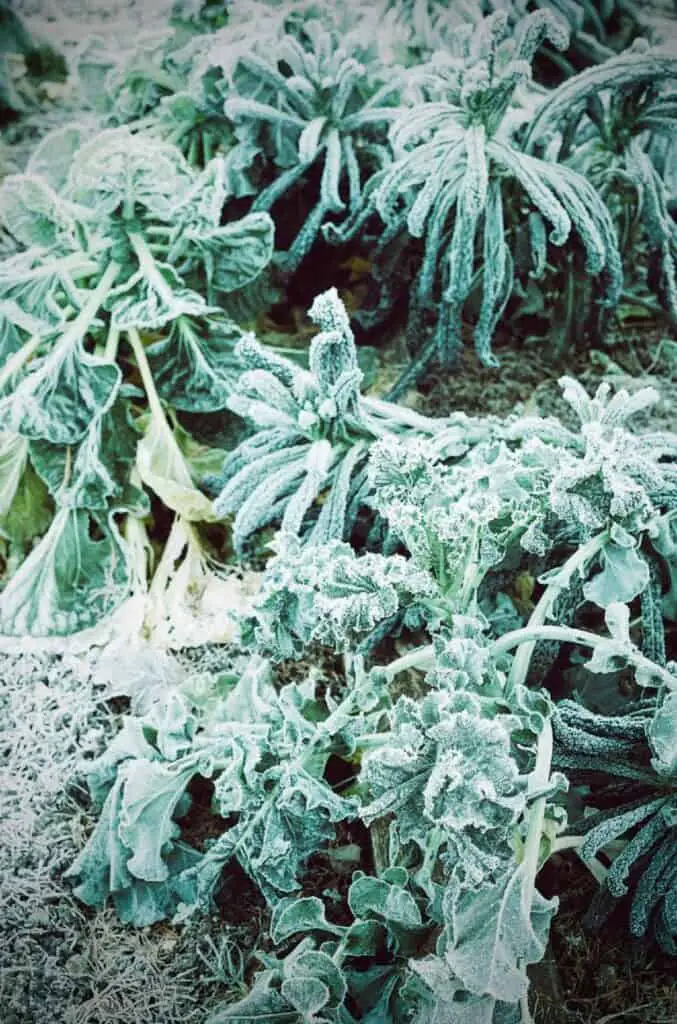
While Brussels sprouts have some frost tolerance, exposure to freezing temperatures can still have detrimental effects. Frost damage can cause wilting, discoloration, and even the death of the plant. The severity of the impact depends on the stage of growth, the duration of exposure, and the specific temperature reached.
Symptoms of frost damage in Brussels sprouts include blackened or water-soaked leaves, limp and mushy stems, and a general withering appearance. In severe cases, the plant may fail to recover, leading to reduced growth and yield.
Let’s look at the various growth stages of Brussels sprouts and how frost affects them to better understand the potential consequences.
| Growth Stage | Impact of Frost |
| Seedling | Vulnerable to frost damage, may lead to stunted growth |
| Vegetative growth | Moderate resistance to frost, may experience some leaf damage |
| Sprout development | Vulnerable to frost, can cause reduced sprout size |
| Mature plant | Better tolerance to frost, but prolonged exposure can harm |
Understanding the impact of frost at each stage can help you take appropriate measures to protect your Brussels sprouts and minimize potential damage.
In the next part of the article, we will explore the factors influencing frost resistance in Brussels sprouts and discuss protective measures you can take to safeguard your plants.
Factors Influencing Frost Resistance
Several factors contribute to the frost resistance of Brussels sprouts. Genetics and cultivar selection play a crucial role in determining a plant’s ability to withstand cold temperatures. Some Brussels sprout varieties are bred specifically for improved frost tolerance, making them more resilient in colder climates.
Environmental conditions also influence frost resistance. Factors such as humidity, wind, and the overall health of the plant can impact its ability to withstand frost. Additionally, the timing of frost events in relation to the growth stage of the plant plays a significant role. Young seedlings and plants in the early stages of development are generally more susceptible to frost damage.
Cold Tolerance Varieties of Brussel Sprouts
There are several varieties of Brussels sprouts available, each with its own unique characteristics. Here are some popular varieties known for their cold tolerance:
| Variety | Characteristics |
| ‘Long Island’ | Traditional variety |
| ‘Diablo’ | Deep purple sprouts |
| ‘Jade Cross’ | Compact plants, high yields |
| ‘Bubbles’ | Disease-resistant, uniform size |
Choosing a variety that Choosing a variety that is specifically bred for cold tolerance can increase the chances of your brussel sprouts surviving frost and freezing temperatures. These varieties have been developed to withstand colder climates and are more resilient to extreme weather conditions.
Protective Measures Against Frost
To protect your Brussels sprouts from frost, various techniques can be employed:
- Covering: Use lightweight fabric covers, such as frost blankets or row covers, to shield the plants from direct contact with cold air. Ensure the covers are secured firmly to prevent heat loss.
- Mulching: Apply a layer of organic mulch around the base of the plants to insulate the soil and retain heat. Straw, shredded leaves, or compost can serve as effective mulching materials.
- Watering: Water the plants thoroughly before a frost event. Moist soil retains heat better than dry soil, providing some protection to the roots.
- Timing: Monitor weather forecasts and take preventive measures when frost is expected. Acting promptly can minimize damage to your Brussels sprouts.
- Location selection: Plant your Brussels sprouts in areas with good air circulation and avoid low-lying spots where cold air can accumulate.
- Row orientation: Planting rows in an east-west direction allows Brussel sprouts to receive maximum sunlight exposure, aiding in frost prevention.
- Overhead protection: In regions prone to frost, consider installing a temporary overhead structure, such as a hoop house or cold frame, to provide additional protection to your Brussels sprouts.
Remember to remove covers and take down temporary structures during sunny periods to avoid overheating and promote healthy growth.
Harvesting and Storage Considerations
Knowing the optimal time to harvest Brussels sprouts before frost is essential. Generally, sprouts are ready for harvest when they reach a firm, tight size, typically 1 to 2 inches in diameter. Harvesting before frost helps prevent damage to the sprouts and ensures the best quality.
It’s crucial to harvest your Brussels sprouts as soon as possible if they have suffered from frost damage. Discard any sprouts showing severe signs of damage, as they are unlikely to recover. Store the undamaged sprouts in a cool, dry place or in the refrigerator to maintain freshness.
Alternative Approaches for Frost-Prone Regions
In regions with severe frosts or extremely cold climates, alternative cultivation methods can be employed to grow Brussels sprouts successfully:
- Greenhouse cultivation: Growing Brussels sprouts in a greenhouse provides controlled environmental conditions and protection from frost. It allows you to extend the growing season and ensure optimal growth.
- Indoor cultivation: Brussels sprouts can be grown indoors in containers under grow lights. This approach enables year-round cultivation and eliminates the risk of frost damage.
By exploring these alternative approaches, even gardeners in frost-prone regions can enjoy the satisfaction of growing their own Brussels sprouts.
Tips for Growing Brussel Sprouts in Cold Climates
In addition to protecting your brussel sprouts from frost and freezing temperatures, there are a few other tips to keep in mind when growing them in cold climates:
- Start Early: Brussel sprouts have a long growing season, so it’s important to start them early. Begin by sowing the seeds indoors 4-6 weeks before the last frost date in your area. This will give the plants a head start and increase their chances of reaching maturity before the cold weather sets in.
- Provide Ample Sunlight: Brussel sprouts thrive in full sun, so choose a location in your garden that receives at least 6 hours of direct sunlight per day. Adequate sunlight will help the plants grow strong and develop sturdy stalks.
- Ensure Proper Drainage: Brussel sprouts prefer well-draining soil. To improve drainage, incorporate organic matter such as compost or aged manure into the soil before planting. This will help prevent waterlogged roots, which can lead to rot or disease.
- Maintain Consistent Moisture: While it’s important to avoid overwatering, it’s equally crucial to provide consistent moisture to your brussel sprouts. They require about 1-1.5 inches (2.5-3.8 cm) of water per week, either from rainfall or supplemental irrigation. Monitor the soil moisture regularly and adjust watering accordingly.
- Fertilize Regularly: Brussel sprouts are heavy feeders and benefit from regular fertilization. Apply a balanced organic fertilizer according to the package instructions, or use compost or well-rotted manure to provide essential nutrients to the plants. Avoid excessive nitrogen, as it can promote leafy growth at the expense of sprout development.
- Control Pests and Diseases: Brussel sprouts are susceptible to pests such as aphids, cabbage worms, and slugs. Regularly inspect your plants and take appropriate measures to control these pests. Additionally, keep an eye out for common diseases like clubroot and powdery mildew, and promptly address any issues to prevent their spread.
- Harvesting Brussel Sprouts: The ideal time to harvest brussel sprouts is when the lower sprouts are about 1-1.5 inches (2.5-3.8 cm) in diameter. Start from the bottom of the stalk and work your way up, picking the sprouts as they mature. The top of the stalk will continue to produce new sprouts, allowing for an extended harvesting period.
Conclusion
Brussels sprouts possess a natural adaptation to cooler climates and can tolerate light frosts. However, freezing temperatures can have a detrimental impact on their growth and yield. Understanding the effects of frost, the factors influencing frost resistance, and the protective measures available will help you cultivate healthy Brussels sprouts and minimize damage.
By implementing appropriate strategies, such as covering, mulching, and timing your plantings, you can increase the likelihood of your Brussels sprouts surviving frost and thriving in colder temperatures. Additionally, considering alternative cultivation methods like greenhouse or indoor cultivation can be effective in frost-prone regions.
Remember, Brussels sprouts are resilient plants, but they still require care and attention to withstand freezing temperatures. Monitoring weather conditions, understanding the growth stages of your plants, and taking proactive measures when frost is expected are essential for their success.

